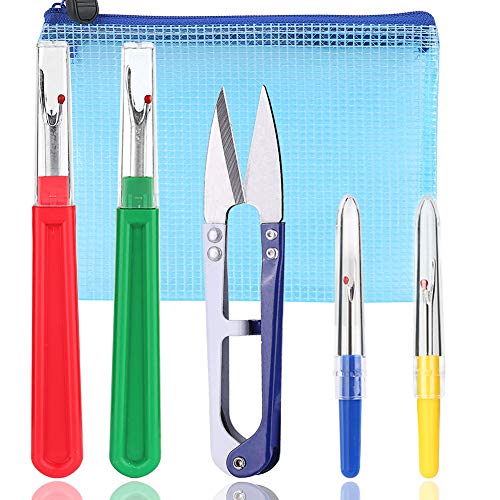Understanding the Purpose of a Seam Ripper
A seam ripper is a small tool used in sewing to remove unwanted stitches or seams. It consists of a handle and a pointed blade that can be used to cut through stitches without damaging the fabric. Whether you are a professional seamstress or a beginner, knowing how to care for your seam ripper is essential to ensure its longevity and efficiency.
Cleaning Your Seam Ripper Regularly
Cleaning your seam ripper regularly is crucial to prevent the build-up of lint, thread, and fabric residue. After each use, take a moment to wipe off any debris on the blade and handle using a soft cloth or a cotton swab. You can also use a small brush to remove stubborn residue. To maintain the sharpness of the blade, make sure to remove any tangled threads or fabric fibers carefully.
Keeping Your Seam Ripper Sharp
To maintain the effectiveness of your seam ripper, it is important to ensure that its blade remains sharp. Over time, the blade may become dull from repeated use. To sharpen it, you can use a sharpening stone or a fine-grit sandpaper. Gently rub the blade against the stone or sandpaper at a slight angle until you see a noticeable improvement in its sharpness. Be cautious not to apply too much pressure, as this may damage the blade.
Storing Your Seam Ripper Properly
Storing your seam ripper properly is essential to protect it from damage and prevent accidents. When not in use, it is recommended to keep your seam ripper in a protective case or a sewing kit. This will help prevent the blade from coming into contact with other objects that could potentially dull or damage it. Avoid storing your seam ripper in a place where it can easily fall or be misplaced, such as in a cluttered sewing box.
Knowing When to Replace Your Seam Ripper
Despite proper care and maintenance, seam rippers do have a lifespan. Over time, the blade may become too dull or worn out, making it less effective in removing stitches. It is important to know when to replace your seam ripper to ensure optimal results. If you notice that your seam ripper is having difficulty cutting through stitches or if the blade is visibly damaged, it may be time to invest in a new one. Additionally, if you find yourself having to use excessive force or repeatedly go over the same area to remove stitches, it may be a sign that your seam ripper is no longer performing at its best.
By following these simple care tips, you can ensure that your seam ripper remains in excellent condition and serves you well in your sewing projects. Regular cleaning, proper storage, and knowing when to replace your seam ripper are key to maintaining its longevity and efficiency. With a well-maintained and sharp seam ripper, you can breeze through your sewing tasks with ease and precision.






